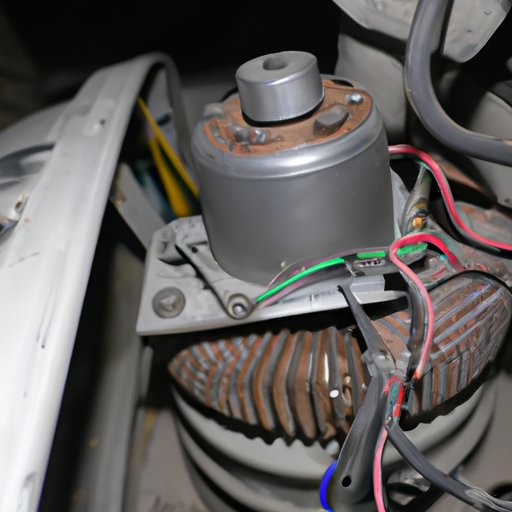
Introduction
Car owners understand the importance of keeping their vehicle in top condition, but sometimes, identifying the cause of a problem can be tricky. One crucial component that keeps a car running is the alternator. The alternator charges the battery and powers the electric systems in the car. In this article, we outline how to tell if your alternator is bad and why it’s important to detect this issue before it causes bigger problems.
A Step-by-Step Guide for Beginners: How to Diagnose a Bad Alternator in Your Car
The first step in diagnosing a bad alternator is conducting a basic visual inspection. Look for any signs of damage, loose connections, or frayed wires. If everything appears normal, start the engine and listen for unusual noises or vibrations. Make sure all electrical components, such as headlights and air conditioning, are turned off, and the engine is running at idle speed.
Signs That Your Alternator is Failing: What to Look for Before the Situation Gets Worse
There are several signs that indicate a failing alternator. These include:
- Dim headlights or interior lights
- A dead battery that won’t hold a charge
- A burning smell (a sign that the alternator is overheating)
- A warning light on the dashboard that indicates low voltage or a bad alternator
- Unusual noises or vibrations coming from the alternator
Be aware that some of these symptoms can also indicate other issues in a car. Still, if you notice any of these signs, it’s essential to take your car to an experienced mechanic to diagnose the problem.
Checking for a Failing Alternator: An Easy DIY Method for Car Owners
One way to check for a failing alternator at home is to use a digital multimeter. Before starting, ensure that the battery is in good condition, and no other devices are running in the car. Here is a step-by-step guide to checking your alternator with a multimeter.
- Disconnect the battery cables and connect the red multimeter lead to the positive (+) battery terminal and the black lead to the negative (-) battery terminal.
- Select the DC voltage range on your multimeter, and take a reading of the battery voltage. This reading should be between 12.4 to 12.7 volts.
- Start the engine, and check the voltage reading again. The reading should be between 13.5 to 14.5 volts. If the voltage doesn’t increase, or the readings are below the recommended levels, your alternator is bad.
It’s crucial to be safe while conducting this test. Ensure that the battery terminals are disconnected while connecting the multimeter leads, and keep loose clothing and long hair away from the engine.
What Happens When an Alternator Goes Bad: A Complete Breakdown of the Symptoms
A dead alternator can cause other problems in your car, such as:
- The serpentine belt may break due to the stress of a faulty alternator, which could cause the engine to overheat or stall
- Power steering and brakes can be affected, making it difficult or impossible to stop your car safely
- The vehicle’s electrical system may fail, causing difficulty starting or running the vehicle
If you notice any of these symptoms, get your car checked by a professional immediately to avoid costly repairs and possible accidents.
Understanding Your Car’s Alternator: A Comprehensive Article on How to Detect a Failing Unit
An alternator is a crucial component of a vehicle’s electrical system. It works in conjunction with the battery, providing power to the car’s electrical components. The most common cause of alternator failure is wear and tear on the brushes, which happens naturally over time. However, other factors such as poor battery connections, bearing wear, and contaminated fluids can also contribute to alternator failure.
Regular maintenance of your car’s electrical system can prevent alternator failure. Keep the battery connections clean, replace worn serpentine belts, and have your alternator and battery checked regularly by a professional mechanic.
Don’t Wait for Your Car to Break Down: Learn How to Check for a Bad Alternator and Avoid Expensive Repairs
It’s critical to detect a failing alternator before it causes significant damage to your vehicle, resulting in costly repairs and towing fees. Regularly inspect your car’s alternator, identify the symptoms of a failing unit, and take your car to a trusted mechanic as soon as you notice any issues. It’s better to be safe than sorry!
Conclusion
Now that you have learned how to tell if your alternator is bad, you can quickly identify any issues with your vehicle’s electrical system. Remember to take safety precautions when testing your alternator, and always seek the help of a professional if you’re unsure of how to proceed. Regular maintenance can save you from costly repairs and keep your vehicle running smoothly for years to come.




